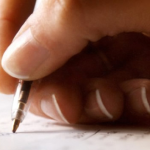If you bike on the regular, then you may be aware of the injuries that are associated with the sport. Here are some tips from Eric Moen, PT to help you stay safe when you bike!
Bicycle-related pain and injuries are commonly associated with poor bike fit. Following these tips will help you minimize the risk of injury:
Postural Tips
Change hand position on the handlebars frequently for upper body comfort.
Keep a controlled but relaxed grip of the handlebars.
When pedaling, your knee should be slightly bent at the bottom of the pedal stroke. Avoid rocking your hips while pedaling.
Common Bicycling Pains
Anterior (Front) Knee Pain. Possible causes are having a saddle that is too low, pedaling at a low cadence (speed), using your quadriceps muscles too much in pedaling, misaligned bicycle cleat for those who use clipless pedals, and muscle imbalance in your legs (strong quadriceps and weak hamstrings).
Neck Pain. Possible causes include poor handlebar or saddle position. A poorly placed handlebar might be too low, at too great a reach, or at too short a reach. A saddle with excessive downward tilt can be a source of neck pain.
Lower Back Pain. Possible causes include inflexible hamstrings, low cadence, using your quadriceps muscles too much in pedaling, poor back strength, and too-long or too-low handlebars.
Hamstring Tendinitis. Possible causes are inflexible hamstrings, high saddle, misaligned bicycle cleat for those who use clipless pedals, and poor hamstring strength.
Hand Numbness or Pain. Possible causes are short-reach handlebars, poorly placed brake levers, and a downward tilt of the saddle.
Foot Numbness or Pain. Possible causes are using quadriceps muscles too much in pedaling, low cadence, faulty foot mechanics, and misaligned bicycle cleat for those who use clipless pedals.
Ilio-Tibial Band Tendinitis. Possible causes are too-high saddle, leg length difference, and misaligned bicycle cleat for those who use clipless pedals.





